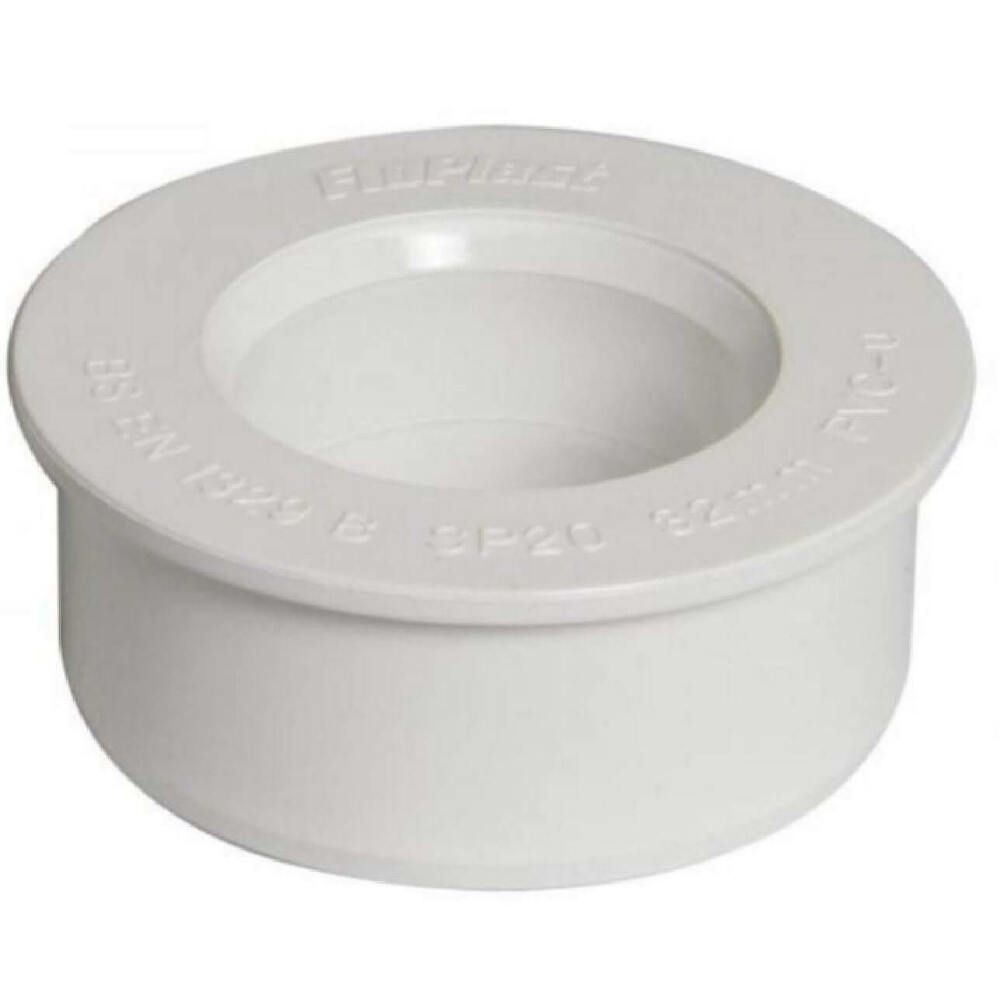Which Soil and Waste Pipe Fittings Need Boss Adaptors?
1. Soil Pipes That Need Additional Connections
A soil pipe is typically a 110mm pipe that carries toilet waste and connects to the underground drainage system. While often installed vertically as a soil stack, it can also run horizontally when required for the system design.
In some situations, additional pipes need to be connected to the soil stack, which requires a boss fitting. A Boss Pipe, Strap Boss, or Waste Reducer is needed to create a connection point, and a Boss Adaptor is then used to reduce the boss to the correct waste pipe size (32mm, 40mm, or 50mm).
Alternatively, a manifold can be used instead of a boss fitting and does not require a boss adaptor.
- Second Toilets or Macerator Toilets – A boss fitting may be needed if an additional toilet, particularly a macerator toilet, needs to connect to an existing soil stack. However, a standard toilet would typically use a branch connection rather than a boss.
- Ventilation Pipes – If an air admittance valve (AAV) or ventilation pipe needs to be installed at a lower point, a boss fitting provides the necessary connection.
- Overflow Pipes – Some water tank overflows or heating system safety overflows may require connection to a soil pipe via a boss fitting and adaptor.
2. Waste Pipes from Sanitary Appliances
Boss fittings are commonly used to connect waste pipes from bathroom and kitchen appliances into the soil stack. These pipes carry wastewater from sinks, baths, and showers. A Boss Pipe, Strap Boss, or Waste Reducer is needed to create a connection point on the soil stack. A boss adaptor is then used to reduce the opening to the correct waste pipe size.
- Sinks and Basins – Typically 32mm or 40mm waste pipes
- Baths and Showers – Typically 40mm waste pipes
- Washing Machines and Dishwashers – Usually 40mm waste pipes
Since these smaller waste pipes cannot be directly inserted into a 110mm soil stack, the boss fitting provides the connection, and the boss adaptor ensures a secure fit by reducing the boss opening to match the waste pipe diameter.
3. Boiler Condensate Pipes
Modern condensing boilers produce acidic wastewater that must be safely disposed of. Since boiler condensate pipes are typically 21.5mm, they cannot be directly connected to a 110mm soil stack. Instead, a Boss Pipe or Strap Boss is used to create the connection point. A Boss Adaptor is then fitted to reduce the boss opening to either 32mm or 40mm, followed by a 32mm or 40mm reducer to bring it down to 21.5mm for the condensate pipe.
This setup ensures a secure, regulation-compliant drainage connection for the boiler’s condensate discharge.
How to Choose the Right Boss Adaptor

To select the correct boss adaptor, consider the following:
Pipe Size Compatibility – Ensure the adaptor reduces to the correct waste pipe diameter, typically 32mm, 40mm, or 50mm.
Material Compatibility – Choose the correct type of boss adaptor based on your existing pipework:
- PVC boss adaptors, designed specifically for solvent weld waste pipes.
- EPDM rubber boss adaptors, suitable for both push-fit and solvent weld waste pipes.
This ensures that the correct fitting is selected based on both the pipe material and connection method.
How to Install a Boss Adaptor

Installing a boss adaptor is straightforward if done correctly. Here’s a step-by-step guide, including specific instructions for different types of boss fittings.
Step 1: Prepare the Boss Fitting
For Strap on Boss – This is the only boss fitting that requires a hole to be drilled in the soil pipe.
- Use a 54mm hole saw to cut the opening.
- Apply solvent weld around the hole and the flange of the strap boss.
- Ensure the fitting is correctly positioned—the word ‘TOP’ is embossed on the fitting for guidance.
- Push the fitting into place and squeeze the clips together to secure it to the soil pipe.
For Boss Pipes & Waste Reducers– These fittings already have an open boss that is ready to accept a boss adaptor.
- If additional entry points are required, they will be sealed and need to be drilled out using a 54mm hole saw.
Step 2: Insert and Secure the Boss Adaptor
- For Push-Fit Boss Adaptors – Simply insert the adaptor and tighten the seal to secure it.
- For Solvent Weld Boss Adaptors – Apply solvent cement to ensure a strong, watertight bond.
Step 3: Connect the Waste Pipe
- Push the waste pipe (32mm, 40mm, or 50mm) into the boss adaptor.
- Use rubber seals (for push-fit) or solvent weld (for solvent connections) depending on the fitting type.
Step 4: Test for Leaks
- Run water through the system and check for leaks at all joints.
- Ensure all seals and solvent welds are properly set to prevent future failures.
Common Mistakes to Avoid
- Drilling the wrong hole size, leading to a poor fit and leaks.
- Overloading a single boss fitting with too many waste pipes.
- Failing to seal joints properly, which can cause water leaks over time.
- Installing a boss fitting incorrectly—ensure the built-in fall (2.5°) is positioned correctly for proper drainage.

















